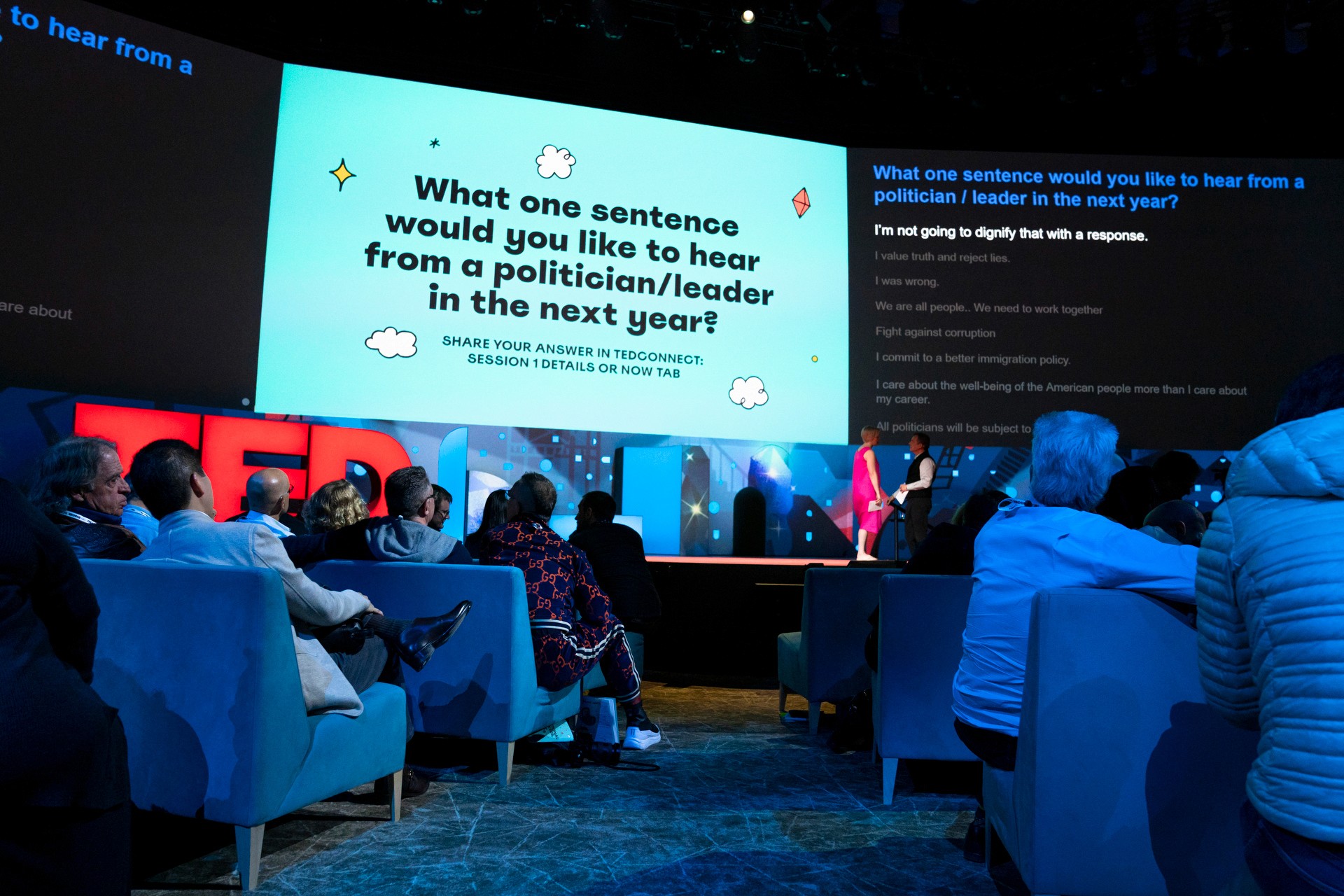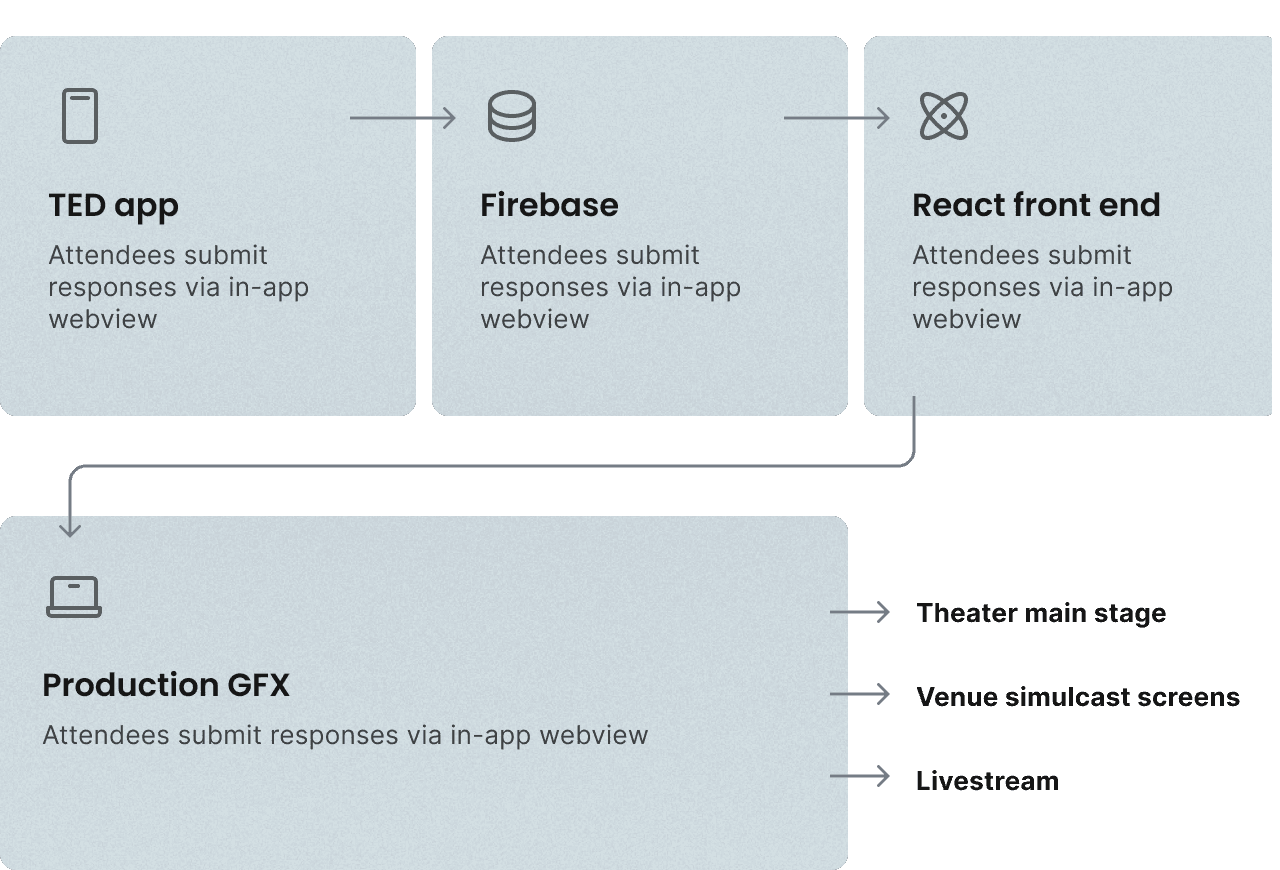Live audience engagement
Enabling realtime feedback from the audience direct to the TED stage.
Roles
Research, Design, Development
TED’s culture of experimentation
One of my favorite things about TED is its willingness to experiment and try new things at its flagship conference in Vancouver. The goal in any of these experiments is to elevate the attendee experience. Some don’t quite catch on, while others become standard. In 2015 our Technology team created an automated photo booth as a hack project, and it’s been a cornerstone attraction for attendees ever since.
A new participation format
In a 2019 collaboration with the conference and curation teams, I developed a feedback feature where anyone at the conference could respond to a live prompt from the session hosts. Responses were collected and displayed in realtime on the main stage, on screens throughout the venue, and on the livestream.

The strategy
We had two important requirements.
A dead simple UX. Something doable within 20 seconds of being prompted.
Accessible to all attendees. No authenticating, SMS, or using intermediaries like Twitter.
To achieve that, we took advantage of the conference app which had a 97% adoption rate among attendees. We presented the UI through a simple web view accessible from the home screen in a single tap.
Implementation
From there, a simple form captured the feedback and sent to Firebase, which updated a React front end that rendered and animated each new incoming response. To achieve a calm reading cadence, I maintained a minimum period of time between on-screen updates.

The stage production staff simply ran the front-end app full screen, feeding the main stage graphics, dozens of screens throughout the Vancouver venue, as well as the official TED livestream.
Learnings & outcome
We captured hundreds of responses every time, exceeding everybody's expectations. Responses were all over the place — hopeful, cynical, funny, stoic, measured, nuanced. One attendee even predicted COVID, writing that they were fearful of a "new Spanish flu - overdue for a pandemic."

The Audacious Project raised an undisclosed amount (but well over $1M) for its initiatives in just 5 minutes. We paired donor names (or anonymous donors) with the project they pledged to support.

The most meaningful effect for me was seeing how a little bit of technology can activate conversation in the audience, showing its value for future TED conferences to come.
But what nobody knew is that attendee’s pandemic prediction would come true in less than a year, forcing us to run TED virtually. You can read more about that here.
©2023 Aaron Weyenberg
Made by me with Framer